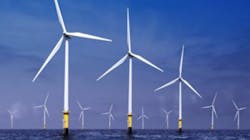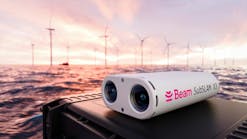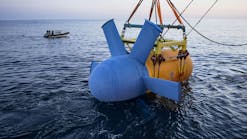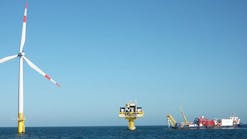Offshore staff
WASHINGTON — The US Department of the Interior reported next steps to bring the opportunity of offshore wind energy to the Gulf of Maine. The Bureau of Ocean Energy Management (BOEM) has made available a Request for Interest (RFI) and Request for Competitive Interest (RFCI) in the Federal Register for public comment.
"The IRA [Inflation Reduction Act] will create good-paying jobs by spurring an unprecedented expansion in clean energy deployment and manufacturing of more than 120,000 wind turbines," the report stated.
The publication of these two requests for public comment represents one of the many steps BOEM has taken to acquire the best available information and knowledge for its decision-making, the Interior Department said.
The RFI is the first step in BOEM’s commercial planning and leasing process to identify the offshore locations that appear most suitable for development, taking into consideration potential impacts to other resources and ocean users. The purpose of the RFI is to gauge interest in the development of commercial wind energy leases within the RFI Area, which consists of about 13,713,800 acres in the Gulf of Maine.
Through the RFI, BOEM seeks feedback from stakeholders, industry, Tribes, ocean users and others regarding the location and size of specific areas they wish to be included in (or excluded from) a future offshore wind energy lease sale, along with other planning considerations. This information will be used to narrow the area to be considered for offshore wind development as BOEM moves forward with the Gulf of Maine planning and leasing process.
The RFCI is the next step in processing the State of Maine’s application for a research lease and provides notice of the proposed research area that Maine requested. BOEM is issuing this RFCI because the Outer Continental Shelf Lands Act and implementing regulations require that BOEM determine whether competitive interest exists in any area that is the subject of an unsolicited lease request.
If BOEM does not receive any indications of competitive interest for a lease in response to this notice, BOEM will move forward with the research application. However, if one or more indications of competitive interest from qualified entities are submitted, BOEM may decide to move forward with the lease issuance process using competitive leasing procedures.
Maine’s application requests 9,700 acres on the Outer Continental Shelf more than 20 nautical miles off the Maine coast. If developed, the research array would comprise up to 12 floating offshore wind turbines capable of generating up to 144 megawatts of renewable energy. BOEM invites submission of indications of commercial interest, as well as comments from interested and affected parties.
The RFCI Area (68,320 acres) expands upon Maine’s requested research lease area to allow future siting flexibility to avoid or minimize conflicts with existing ocean users should a lease (research or commercial) be issued. Only a project that is approximately the size of Maine’s research lease proposal (i.e., no more than 10,000 acres and no more than 12 floating turbines) and provides a conceptual framework for addressing the research priorities identified in the RFCI will have the potential to move forward.
By 2025, the Interior Department plans to hold up to five additional offshore lease sales and complete the review of at least 16 plans to construct and operate commercial, offshore wind energy facilities, which would represent more than 22 GW of clean energy for the nation.
08.18.2022





